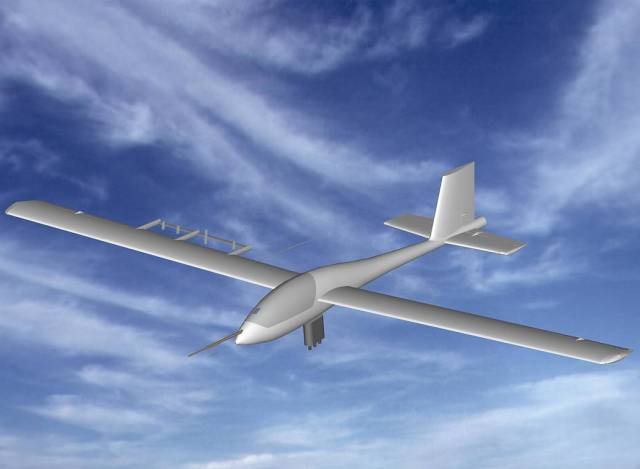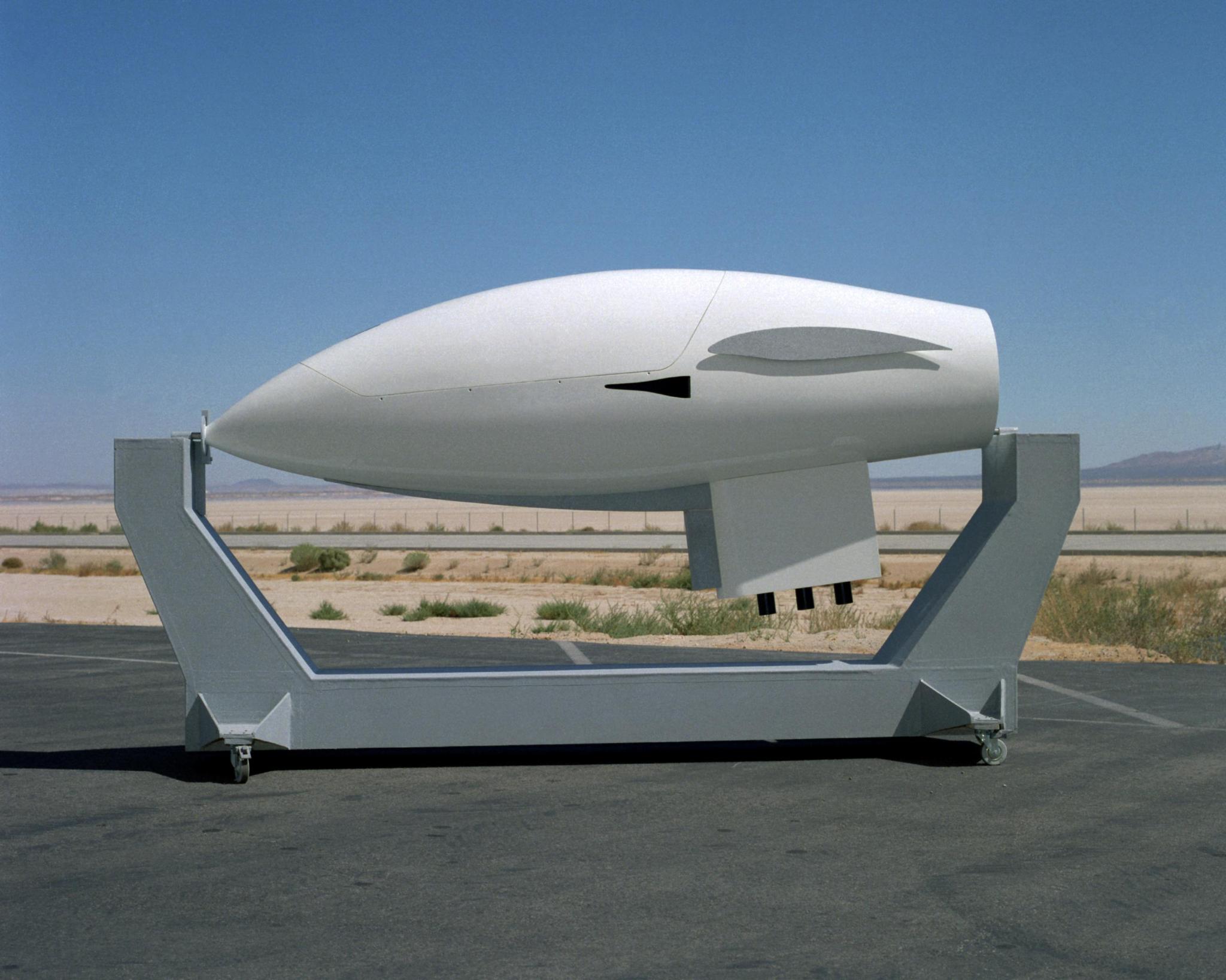Apex Remotely Piloted Sailplane

Contents
The Apex project was intended to prove the feasibility of extended duration flight at altitudes near 100,000 feet. because the aerodynamics of this little explored flight regime were largely unknown.
Research into low Reynolds number, high subsonic Mach number aerodynamics had produced some promising, if limited, results (see references below). Questions remained and flight testing offered an attractive means of acquiring some of those answers. A preliminary study to establish trimmed flight at or near 100,000 feet altitude identified several possible techniques, depending on the launch method used.
Objectives
The objectives of the Apex project were:
- To validate high-altitude airfoil design methodologies by measuring airfoil characteristics at low Reynolds numbers and high subsonic Mach numbers in a low turbulence (flight) environment.
- To establish a high-altitude testbed aircraft.
Experiment Description
The Apex test aircraft was to have been a remotely piloted, highly modified commercial sailplane, carried to an altitude in excess of 100,000 feet by a high-altitude balloon, then released to for free flight. Flight testing was to have been made at altitudes between 100,000 and 95,000 feet while collecting aerodynamic data down to an altitude of about 70,000 ft, then glide to a landing at Edwards AFB. The wing had been designed to incorporate an airfoil suitable for low Reynolds number flight at high subsonic Mach numbers (less than 0.65 Mach). A portion of the unswept/untapered wing was to have been served as a test section. The wing instrumentation was designed to be embedded during construction. The following measurements were to have been made to satisfy the stated objectives:
- Measure boundary layer profiles at several locations streamwise.
- Measure chordwise pressure distribution.
- Measure boundary-layer state with hot-film anemometers.
- Measure section drag with a fixed wake rake.
- Measure freestream airdata information.
The experiment was to have used a PCM and telemetry system to send the signals to a ground-based recording system. Flight test maneuvers were planned to be limited duration push-overs to lower-than-trim angles of attack, and stabilized turns to achieve higher-than-trim angles of attack. Other maneuvers could have included constant alpha descents, constant qbar descents or constant Mach number descents.
The Apex project completed several parts of the airframe, but the effort was canceled before they were assembled and flown.
References
Low Reynolds Number High Subsonic Mach Number Research:
- Drela, M., “Transonic Low-Reynolds Number Airfoils“, Journal of Aircraft, Vol. 29, No. 6, Nov.-Dec. 1992.
- Toot, Peggy L., “Summary of Experimental Testing of a Transonic Low Reynolds Number Airfoil“, Low Reynolds Number Aerodynamics Conference, Notre Dame, June 1989.
APEX design Study:
- Murray, J., Moes, T., Norlin, K., Bauer, J., Geenen, R., Moulton, B., Hoang, S., “Piloted Simulation Study of a Balloon-Assisted Deployment of an Aircraft at High Altitude“, NASA TM 104245, January 1992.





























